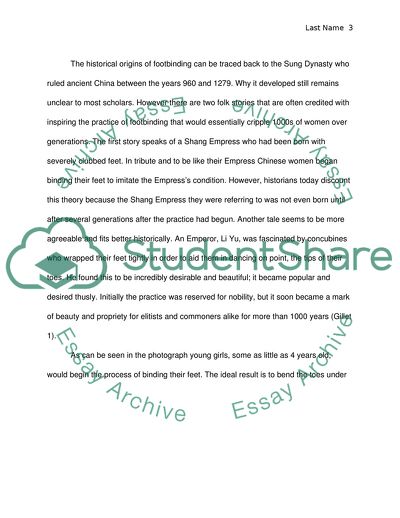Cite this document
(Chinese Culture: Discussing the Unethical Practice of Footbinding Research Paper, n.d.)
Chinese Culture: Discussing the Unethical Practice of Footbinding Research Paper. https://studentshare.org/culture/1816820-chineses-culture-foot-binding
Chinese Culture: Discussing the Unethical Practice of Footbinding Research Paper. https://studentshare.org/culture/1816820-chineses-culture-foot-binding
(Chinese Culture: Discussing the Unethical Practice of Footbinding Research Paper)
Chinese Culture: Discussing the Unethical Practice of Footbinding Research Paper. https://studentshare.org/culture/1816820-chineses-culture-foot-binding.
Chinese Culture: Discussing the Unethical Practice of Footbinding Research Paper. https://studentshare.org/culture/1816820-chineses-culture-foot-binding.
“Chinese Culture: Discussing the Unethical Practice of Footbinding Research Paper”. https://studentshare.org/culture/1816820-chineses-culture-foot-binding.


